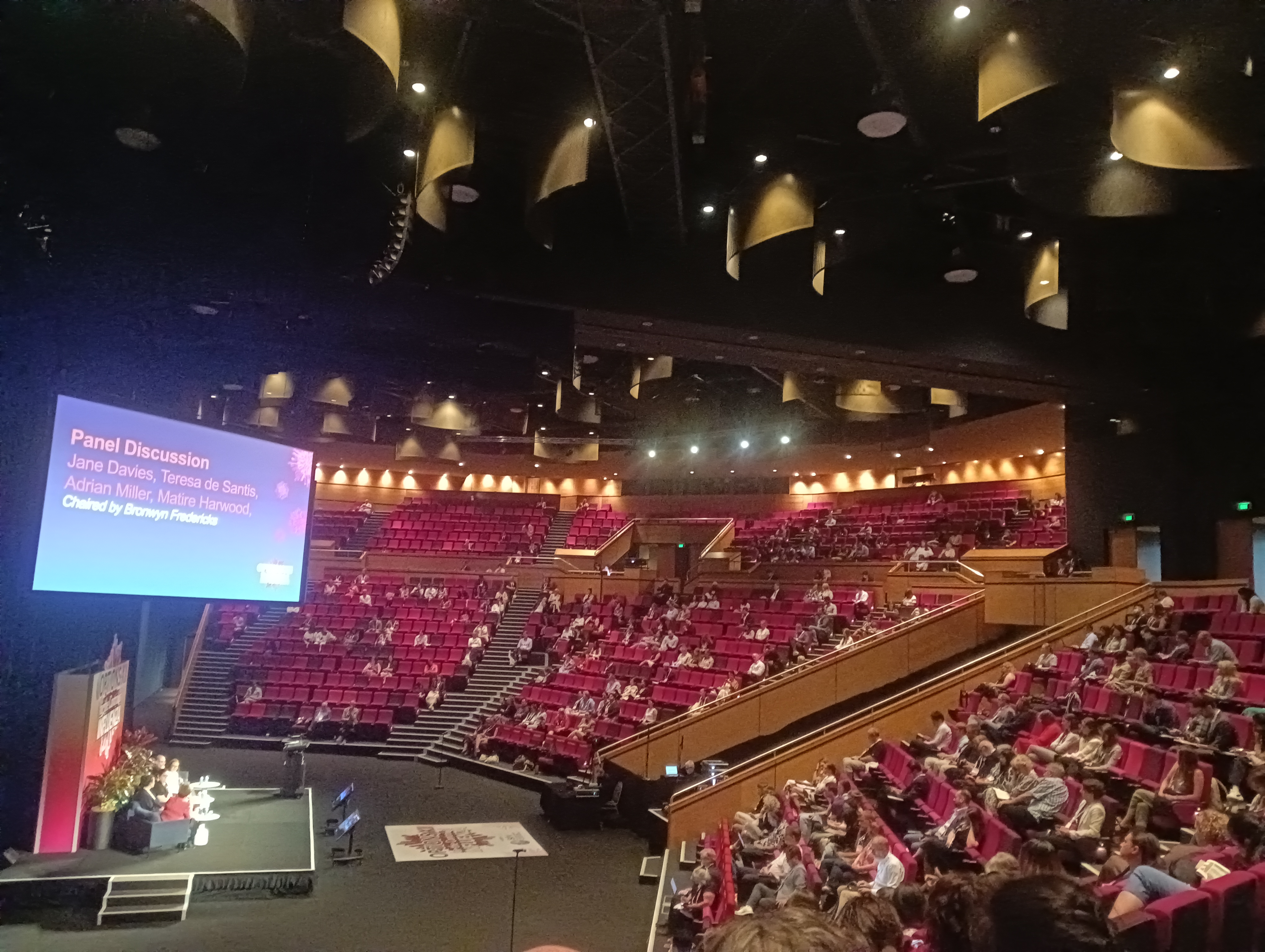OptionsXII 2024 Conference
by Jingyan, Mousumi, Imantha
We had a chance to attend the conference Options XII 2024 (https://www.optionsxii2024.org.uk) held every two years focusing on bringing together leading researchers, practitioners, industry representatives and policy makers from all around the world. It aims to explore and advance the understanding of influenza and its impact on human and animal health. This year it held in the beautiful city Brisbane, a thriving hub for arts, culture, and technology with a stunning riverfront, lush parks, and a vibrant nightlife.
From our group, we (Jingyan, Mousumi, Imantha) attended this conference and had the privilege to present posters based on our current work. More than 1000 researchers all over the globe participated in this gathering. Had a chance to listen to their talks in-person are always a great experience. It is one of the largest conferences on Influenza, so vast and bustling that once you miss the chance to talk to someone, finding them again feels almost impossible. It was really a great experience to be a part of the conference.
Personal reflections
by Jingyan
Recently, I attended a poster presentation at “OptionsXII for the control of Influenza’’conference (https://www.optionsxii2024.org.uk) in Brisbane, Austrlia (29 September – 2 October 2024). The biggest respiratory related conference in ID. The conference focuses on a full range of ‘real-world’ issues relevant to the ‘flu community’ – plus additional spotlights on the latest research on the latest research on SARS-CoV-2 and RSV.
I was inspired by the talk “Impact of COVID-19 & Influenza on SHIVERS Longitudinal community / household cohorts in New Zealand” (SHIVERS: Southern Hemisphere Influenza, Vaccine Effectiveness, Research & Surveillance).
Here is the summary of the talk:
SHIVERS – I, II, III, IV
SHIVERS – I (US-CDC): MOH SHIVERS – II (NIH-CEIRS): WellKiwis Adult SHIVERS – III (NIH-DIVINCI): WellKiwis Infant SHIVERS – IV (NIH-CEIRR): WellKiwis Household
Objectives – SHIVERS – II, III, IV Primary objectives – immune imprinting
- Compare humoral (antibody) and cellular (B & T cells, cytokines) responses between prior/first and subsequent flu exposures, including magnitude, specificity, repertoire and antibody post-translational modifications.
- Determine how prior/first exposure (infection, vaccination and strain) impact immune responses on subsequent exposures.
- Determine correlates of protection: antibody, B and T cells.
Secondary objectives – Community / household transmission:
- Disease burden, risk factors, clinical symptoms and illness, vaccine effectiveness, household transmission dynamics
WellKiwis Vaccine Effectiveness Study Setting: Community cohort (n = 3165)
- Before COVID-19 arrival: All participants infection-naïve but highly vaccinated
- Once COVID-19 arrival: High levels of COVID-19 in the cohort
Method: Test-negative design using a Cox proportional hazards model
- Primary outcome measure (incidence): number of days from 14 days after the most recent vaccine dose to the first instance of PCR-confirmed COVID-19.
- Exposure definition: Number of vaccine doses to a maximum of 4 doses with vaccinated status defined as commencing 14 days after administration of the dose.
Conclusion
- SHIVERS / WellKiwis community and household cohorts provide unique evidence and policy insights for vaccine development and pandemic response / preparedness.
- Impact of public health and social measures on viral infections: inform future policy development in pandemic responses.
- Incidence of COVID-19 and influenza provides evidence on community burden – helping to build full spectrum of disease burden, predicting virus transmission.
- COVID-19 vaccine effectiveness: inform vaccination policy.
- Household transmission of COVID-19: measures secondary attack rate and serial interval – informing pandemic prediction.
Besides from this talk, the exciting and insightful talks from leaders and researchers from WHO persuaded us, a global community should better collaborate to fight for the pandemic. We set up the goals that should be realized in the next Options conference, cultivate the sense of responsibility from global network and provide the solutions to long-term challenges of pandemic.
by Mousumi
This year, Brisbane hosted Options XII 2024, a leading conference focused on respiratory viruses, with a special emphasis on influenza. For me, it was an incredible opportunity to engage with world-class researchers and have meaningful conversations with them. I presented my work in the poster session and received several interesting pieces of feedback about it. As an infectious disease modeller, I found this conference to be a valuable platform to explore related fields that broadened my understanding of infectious diseases beyond the realm of modelling. The event brought together clinicians, policymakers, modellers, and epidemiologists, offering a diverse array of perspectives on this field. I had the privilege of attending lectures that spanned topics from the cell level to the population level. With my current interest on human mobility and infectious diseases, I found the sessions on mobility patterns, contact behaviors, and their impact on respiratory disease transmission particularly engaging.
Beyond the professional opportunities, Brisbane itself left me captivated. The city’s river, flowing gracefully through its heart, and the stunning night view of the Story Bridge with its shimmering reflection on the water were nothing short of mesmerizing. Overall, Options XII 2024 offered the perfect blend of insightful talks, delightful weather, and the vibrant charm of Brisbane’s city life.
by Imantha
I had the opportunity to present my work on estimating influenza prevalence in administrative regions using generative modeling at the Options XII conference in Brisbane. It was a valuable experience to showcase my research and gain insightful ideas from experts in the field. Being one of the largest conferences, the event features numerous presentations & scientific discussions across multiple spaces. These talks varied from public policy, virology to vaccines, allowing my peers & me to attend sessions aligned with our interests. Coming from a non-epidemiological background, I found it particularly enriching to explore topics that I am unfamiliar with. To add to this, the conference also featured talks from industry partners that allowed me to understand how academic research translates into practical applications, such as disease surveillance and vaccine development.
Brisbane in early October was truly a delight, with near-perfect weather, beautiful city views, exceptional culinary experiences, and warm and friendly people. Whilst I was there, I also had the opportunity to travel with my wife to the Gold Coast, where I experienced some thrilling roller coaster rides at theme parks—truly a thrilling adventure I will always cherish. The only thing I missed was visiting the Great Barrier Reef, which I’m determined to explore the next time I’m there.
Pictures!


